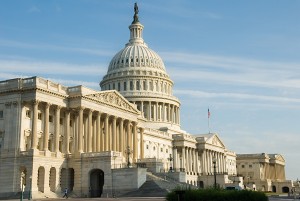
WASHINGTON, D.C. – The Congressional Budget Office (CBO) and the staff of the Joint Committee on Taxation (JCT) have produced an estimate of the budgetary effects of the American Health Care Act, introduced recently by Republicans as a replacement to the Affordable Health Care (Obamacare).
In consultation with the budget committees, CBO used its March 2016 baseline with adjustments for subsequently enacted legislation, which underlies the resolution, as the benchmark to measure the cost of the legislation.
Effects on the Federal Budget
CBO and JCT estimate that enacting the legislation would reduce federal deficits by $337 billion over the 2017-2026 period. That total consists of $323 billion in on-budget savings and $13 billion in off-budget savings. Outlays would be reduced by $1.2 trillion over the period, and revenues would be reduced by $0.9 trillion.
The largest savings would come from reductions in outlays for Medicaid and from the elimination of the Affordable Care Act’s (ACA’s) subsidies for nongroup health insurance. The largest costs would come from repealing many of the changes the ACA made to the Internal Revenue Code—including an increase in the Hospital Insurance payroll tax rate for high-income taxpayers, a surtax on those taxpayers’ net investment income, and annual fees imposed on health insurers—and from the establishment of a new tax credit for health insurance.
Pay-as-you-go procedures apply because enacting the legislation would affect direct spending and revenues. CBO and JCT estimate that enacting the legislation would not increase net direct spending or on-budget deficits by more than $5 billion in any of the four consecutive 10-year periods beginning in 2027.
Effects on Health Insurance Coverage
 To estimate the budgetary effects, CBO and JCT projected how the legislation would change the number of people who obtain federally subsidized health insurance through Medicaid, the nongroup market, and the employment-based market, as well as many other factors.
To estimate the budgetary effects, CBO and JCT projected how the legislation would change the number of people who obtain federally subsidized health insurance through Medicaid, the nongroup market, and the employment-based market, as well as many other factors.
CBO and JCT estimate that, in 2018, 14 million more people would be uninsured under the legislation than under current law. Most of that increase would stem from repealing the penalties associated with the individual mandate. Some of those people would choose not to have insurance because they chose to be covered by insurance under current law only to avoid paying the penalties, and some people would forgo insurance in response to higher premiums.
Later, following additional changes to subsidies for insurance purchased in the nongroup market and to the Medicaid program, the increase in the number of uninsured people relative to the number under current law would rise to 21 million in 2020 and then to 24 million in 2026. The reductions in insurance coverage between 2018 and 2026 would stem in large part from changes in Medicaid enrollment—because some states would discontinue their expansion of eligibility, some states that would have expanded eligibility in the future would choose not to do so, and per-enrollee spending in the program would be capped. In 2026, an estimated 52 million people would be uninsured, compared with 28 million who would lack insurance that year under current law.








